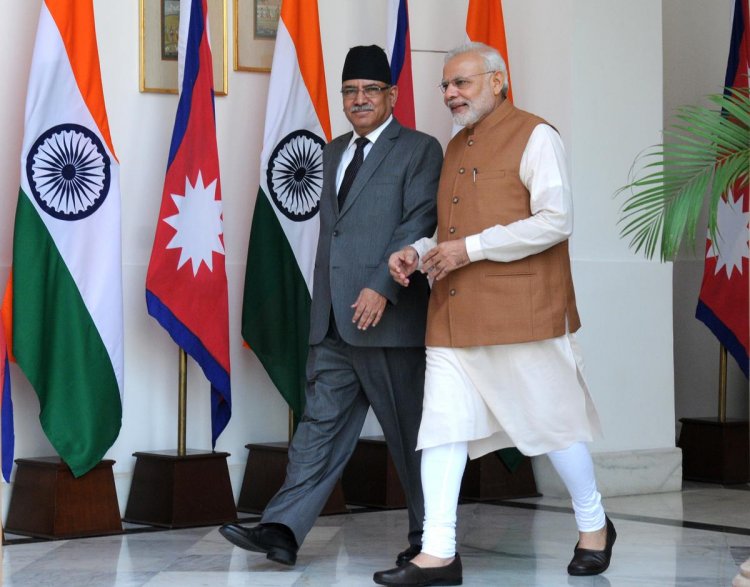Nepal: Caught Between India, China, US
STORIES, ANALYSES, EXPERT VIEWS

Nepali politics continues to be in a constant flux. While Prime Minister Prachanda’s struggles at home turf are immense, he is faced with myriad challenges when it comes to foreign policy.
Three-way challenges
Prachanda, writes Sanjeev Satgainya (journalist based in Kathmandu) “has taken the helm at a time when there have been overt bids by Beijing to expand its sphere of influence in Nepal, where New Delhi traditionally enjoyed its clout, just as the Americans appear to have renewed their interest….”
‘The biggest bane of Prachanda is that he is leading one of the weakest governments ever in terms of legitimacy,’ said K.C. Khadga, a professor of international relations and diplomacy at Tribhuvan University, Kathmandu. ‘And there is a lack of trust from… say, neighboring countries and the U.S., given his track record, his own worldview and his party’s ideological and philosophical perspectives.’
Nepal can serve as a bridge between India and China
As the U.S. and China jostle for influence, Satgainya staes “Prachanda faces a tightrope walk with India. He is avidly awaiting an invitation from New Delhi, with reports suggesting that an April-end or May date is being considered….”
Prachanda’s keenness to fly to India has been evident from his public statements that New Delhi would be his first port of call and that he would visit Delhi ‘soon’, even as a formal invitation was due.
“That Nepal can serve as a bridge between two big economies—India and China— for its own economic development has been a common refrain for long, but it has failed to materialise due largely to unstable Nepali politics.” But with mounting economic problems at home and heating competition between India and China, Nepal cannot afford to overlook its foreign policy challenges any more, say experts.
Nepal need for investments
The country is in dire need of investments. The Chinese are keen to pour money into Nepal under the Belt and Road Initiative (BRI), to which Nepal signed up in 2017, while New Delhi clearly appears reluctant to be engaged with any project that is part of the BRI. Though nine projects were shortlisted under the BRI, not even one has moved forward. India has agreed to buy electricity from Nepal, but it has made it clear that it will buy power only from those projects where there is no Chinese involvement. A reluctant India, in the past, however, has shown an increased interest in investing in hydropower plants in Nepal. A flurry of visits from the U.S. is viewed in Kathmandu as Washington’s bid to bring Nepal under its security umbrella.
Observers say Prachanda will do well if he can bring domestic actors together for a consistent and coherent foreign policy. ‘But given the fluid political landscape, for Prachanda, bringing all the parties to consensus on foreign policy is not easy,’ said Chandra Dev Bhatta, a political scientist who writes on geopolitical matters. ‘For years, Nepali politicians have failed to prioritise foreign policy in national interest, and Prachanda is no exception. Since his appointment as the Prime Minister, he has been using all his might to save his government, just as foreign policy remains completely ignored.’
Trust deficit with India
Prachanda, writes Satgainya “has also his task cut out restoring the trust with India. The K.P. Sharma Oli government’s decision in May 2020 to publish a new map showing the Kalapani area, which India claims as its own, within Nepali territory created a big chasm between the two neighbours. ‘That led to a trust deficit which still continues,’ said Mr. Bhatta. ‘I doubt this will even be an agenda when the Prime Minister visits Delhi.’
Experts say amid the fast-changing world order, Prachanda’s major focus should be on taking India and China, the two immediate neighbours, into confidence, while maintaining robust ties with the U.S.















